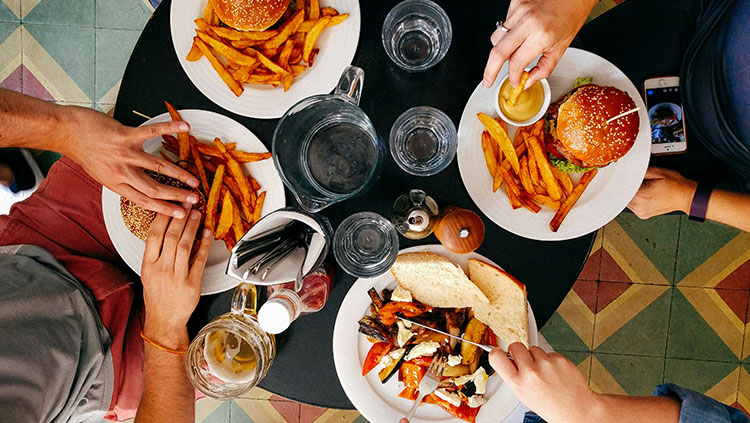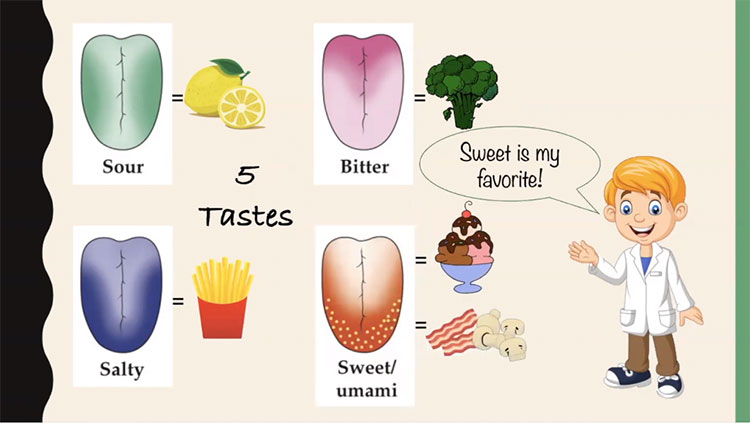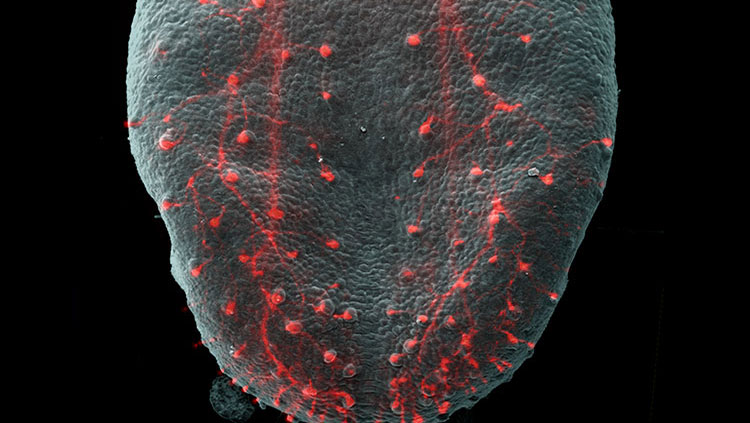Do Different Parts of the Tongue Taste Different Things?
- Published3 Jan 2019
- Reviewed3 Jan 2019
- Author Rina Diane Caballar
- Source BrainFacts/SfN

Coffee is bitter, chips are salty, limes are sour, candy is sweet, and chicken broth is umami. These are the five basic tastes you’re familiar with. But how do you recognize each taste, and how do you distinguish one from the other?
Maybe your initial reaction would be to consult the tongue map, that diagram of a pink tongue showing specific areas for each taste. There’s just one problem — it’s wrong.
“The tongue does not have different regions specialized for different tastes,” says Brian Lewandowski, a neuroscientist and taste expert at the Monell Chemical Senses Center in Philadelphia. “All regions of the tongue that detect taste respond to all five taste qualities. There are some mild regional differences in sensitivity for different taste qualities, but these differences are small enough that they do not play a clear role in taste perception.”
So where did the tongue map come from? It all started with a 1901 paper by German scientist David Hänig. Hänig measured responses to taste stimuli in different areas of the tongue and found the strength of those responses varied depending on location — an observation that is still considered generally correct. Hänig drew a line graph showing the change in sensitivity to taste stimuli from one area of the tongue to the next. However, the graph was artistically rendered and it could give the impression that different areas of the tongue were responsible for certain tastes.
In the 1940s, Edwin Boring redrew the figure for his book on the senses and perception. It was simplified, misinterpreting and inadvertently misrepresenting Hänig’s original findings. Instead of showing the relative sensitivity to each of the basic tastes in each region of the tongue, the figure only listed the taste that each region was most sensitive to. The result was a figure showing a tongue with various regions highlighted and a single taste listed for each. This tongue map became standard in science textbooks, and unfortunately, students still learn about this myth today.
The tongue map’s simplicity lends to its appeal. “It’s an easy-to-understand figure that appears to provide some insight into how taste works without any need to get into cell biology,” Lewandowski says.
But, to understand how taste really works, you have to take a closer look at the tongue’s specialized cells. It all starts with taste buds, the parts of the tongue that detect taste. Each person has between 5,000 and 10,000 taste buds, most of which are located in papillae — the small rounded bumps on the upper surface of the tongue. Taste buds are also scattered across the roof of the mouth and the back of the throat. Each taste bud contains around 50 to 100 specialized sensory cells that detect taste stimuli.
“When we eat or drink, chemicals like sugars, salts, acids, and amino acids come in contact with specialized receptor proteins on taste receptor cells,” says Steven Munger, director of the Center for Smell and Taste at the University of Florida. The chemicals trigger the cells to release a volley of neural signals, which are eventually routed to an area of the brain devoted to processing taste information, the primary gustatory cortex. The gustatory cortex interprets the incoming signals and integrates them with other sensory information, such as smells, allowing us to perceive flavors, Munger says.
Our thoughts and memories also play a role in taste perception. “Taste is about more than identification,” Munger says. “Our preferences, experiences, expectations, and motivations can impact how we feel about a taste.”
In other words, our sense of taste is much more complex than the tongue map would have us believe.
CONTENTPROVIDEDBY
BrainFacts/SfN
References
Munger, S. (2017, May 23). The taste map of the tongue you learned in school is all wrong. Retrieved from https://www.smithsonianmag.com/science-nature/neat-and-tidy-map-tastes-tongue-you-learned-school-all-wrong-180963407/
Monell Chemical Senses Center. (n.d.). Monell taste primer. Retrieved from https://www.monell.org/news/fact_sheets/monell_taste_primer
Informed Health Online [Internet]. Cologne, Germany: Institute for Quality and Efficiency in Health Care (IQWiG); 2006. How does our sense of taste work? 2011 Dec 20 [Updated 2016 Aug 17]. Available from: https://www.ncbi.nlm.nih.gov/books/NBK279408/


















